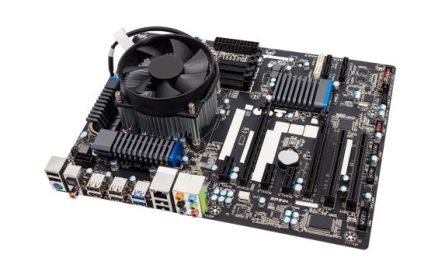In case your business functions on multiple websites, you require transferring data confidentially between them. You might even require a single data centre to connect to numerous websites. While you can use a business broadband connection from an internet service provider, reliability is a crucial point to keep in mind for choosing a good service provider.
Opting for a point-to-point network permits businesses to function on WAN (wide area network) across multiple locations. The advantages involve zero loss in performance that may be caused due to distance and other parameters and zero security risk of using public networks. A point-to-point network is one of the best connectivity points to connect two sites. This endows you with a dedicated and trustworthy leased line permitting seamless networking throughout all locations.
Technology
So, you may be wondering, what is a point-to-point network? A point-to-point network is delivered in the same manner as a business broadband network or network connected to a dedicated leased line. A major distinction is, in the case of a point-to-point network, a private line internet will always be available through all fibre circuit systems with zero involvement of a copper cable.
Dedicated leased lines, in most cases, go through a street cabinet. A fibre optic network from the exchange runs to a cabinet to further bring the fibre cable service to your building or setup. Contrary to this, a business broadband network, or point-to-point connections may take longer to install and may be slightly costly; the benefits of such private internet networks are massive. Continue reading to know the top benefits of private internet networks.
Point-to-point network line – What is it?
Linking your premises just by using a point-to-point internet network has plenty of benefits. One major thing is that such lines are synchronous. It means maximum internet data speed may be the same in all directions. In contrast, broadband is asynchronous, meaning the download speeds are often faster as compared to the upload speeds. You may authenticate or check the prevailing speed easily yourself with the help of free online speed testers. On standard domestic fibre broadband networks, the upload speed is usually around 20 per cent of the download speed. It is fine when your maximum data comes in, i.e., when you use the internet to listen to music on Spotify, catch up on television shows and more.
However, in case you require transmitting a massive amount of data the other way round, such as to send files or back up some important data, then an asynchronous network may not work and hence its network may appear as a major drawback to you. With a point-to-point network, you are sure to have zero issues uploading data or other crucial information, sharing huge files from one location to another and conducting other activities.
What are the primary advantages of opting for a point-to-point leased line network?
Opting for a leased line network may benefit you if you run a business, as the network is designed exclusively for you and your business. Thus, with such a network, there is zero contention. This basically means that your speed will not slow down by someone else using the same network while you are using it. Testing the contention on the broadband can be done easily through a speed test at distinct times of the day. Domestic broadband may be slower in the afternoons and evenings as, at this time, many people tend to be online together.
Note that by using point to point leased network, you can avail the benefit of low latency too. This means that there will be less delay and stress in responding to data requests from one location to another. This line is massively faster, so you, as a user at remote locations, may get similar performance as those placed at the head offices.
A point-to-point leased line network comes with zero restrictions on the data volume that you can transfer in a day. Broadband, however, on other hand, may be subject to restrictions on usage. Even the so-called unlimited network services may tend to come with a fair usage clause, meaning the internet service provider may restrict the internet network service on broadband if they think you are using it a lot. However, for such networks, there is a security benefit prevalent.
The data in the point-to-point leased network is often transmitted directly between premises, i.e., the internet service provider and your premises, instead of going through a massive internet Ethernet connection. This is not sent over the wider internet, so there is minimal chance of the same being intercepted. Also, you can apply your personal encryption to data being transferred for additional security.
Also, on a point-to-point leased network, you can determine your priorities linked with traffic. This is done to ensure that the information vital for the functioning of your regular business operation takes major priority over the less critical transmission like backups or archiving.
Business case
What can a point-to-point leased internet network do for your organisation or business? Discussed above are the technology benefits of higher security and synchronous speeds. What all of this adds up to is a swift and seamless user experience for all working staff, wherever located. VoIP telephony services and video conferencing run smoothly in such networks.
However, all the above benefits provided by an internet service provider are not just dependent on a reliable and good internet connection but also on a well-prepared SLA (service level agreement) for the point-to-point network. Ensure that the SLA assures to provide a quick fix within the deadline in the event of any issue faced by the point-to-point network. Here’s why you must read all the terms and conditions before signing an SLA deal.
Signing a robust SLA deal details the kind of internet service you may expect and permits you to hold your internet service provider accountable. If the agreed requirements are not met by the service provider, then you can make the provider compensate. Note that many service providers may even prefer opting for an SLA deal as this specific activity tends to allow them to retain you as a customer through the provision of their best services.

